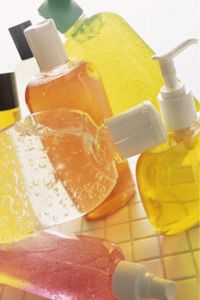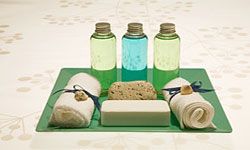Do you remember when soap was simple? A bar was all you needed to get your body clean and smelling fresh. Today, there are liquid cleansing options ranging from foaming gels and hydrating creams to antibacterial washes. And each has its own claim to moisturize, exfoliate or prevent breakouts.
All soaps contain the same basic ingredients: soap compounds, synthetic surfactants and alkali fatty acids. It's what makes them soap. So what's the problem with bar soap? Although a variety of bar soaps exist, people with dry or sensitive skin often find they can be harsh on skin.
Advertisement
But not all cleansers contain those basic soap ingredients, or at least not in the same ratios. Cleansers aren't exactly the same as soaps because they don't need to contain the same levels of detergent and fatty acids. They often contain ingredients that promise to moisturize, deodorize or prevent skin problems such as acne or aging skin. Because of this, liquid body cleansers are less likely to strip natural oils from our skin. But do the ingredients of body cleansers that are made for men versus those made for women make a difference, or are cleansers unisex? Let's get to the bottom of it.
Advertisement



